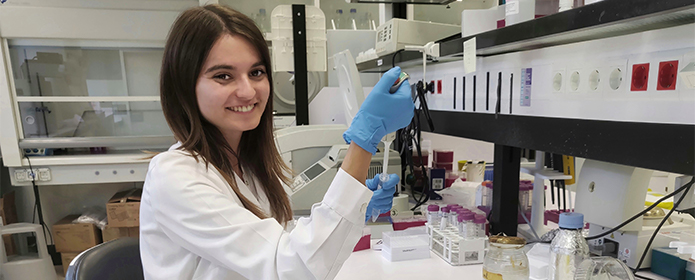Cellular parallelism identified financial aid to understand the evolution of multiple myeloma
The study, conducted at the Cima University of Navarra, sample that high levels of certain immune cells are associated with a worse outcome in patients with multiple myeloma.

Researchers at Cima University of Navarra have identified a parallelism between cells that financial aid to know the evolution of multiple myeloma. The work, published in the scientific journal Bloodis part of the doctoral thesis of Cristina Pérez, who is carrying out her scientific training thanks to funding from the association Española Contra el Cáncer (AECC) in Navarra.
Multiple myeloma is a hematological cancer subject that affects the bone marrow. It is characterized by its resistance to treatment, leading to relapses in patients. Understanding the mechanisms involved in this disease is essential to guide effective treatments.
"Within the organism there are a subject of cells, called myeloid suppressor cells, which cause the natural defensive activity of T lymphocytes to be reduced. In cases of multiple myeloma, the number and activity of these myeloid suppressor cells increase, so that they favor the suppression of the body's defenses (immunosuppression) and, therefore, tumor progression," explains Cristina Pérez.
Despite the relative knowledge of the effect of these cells in these cancers, at the moment there is no way to measure their activity that would help in the prognosis of patients, nor in the development of new immunotherapy treatments.
The team at Cima and the Clínica Universidad de Navarracoordinated by Dr. Bruno Paiva, has discovered that there is a "parallelism" between these suppressor cells and another immune cell subject called neutrophils. "In the study we have observed that high levels of mature neutrophils are related to a worse evolution of patients with multiple myeloma. In addition, at the molecular level, mature neutrophils show similarities to myeloid suppressor cells."
These observations have allowed the researchers to propose, for the first time, to use mature neutrophils as indicators, a tool to measure the activity of myeloid suppressor cells. "It therefore provides a better understanding of the prognosis of patients with multiple myeloma and opens the door to design possible new immunotherapies."
-
reference letter bibliography:
Blood. 2020 Jul 9;136(2):199-209.
doi: 10.1182/blood.2019004537.
